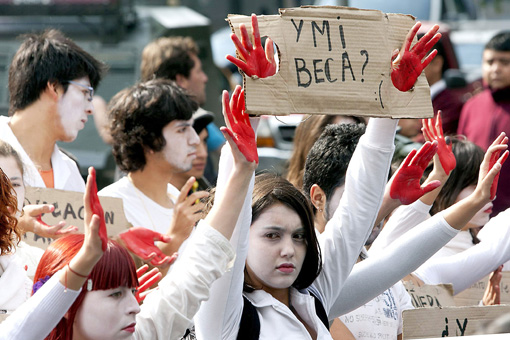The quality of Chile’s universities is well known across the Americas. Two of these—Pontificia Universidad Católica de ChileUniversidad de Chile—rank in the top five of the 2011 U.S. News and World Report list of the 100 best schools in the region.
Unfortunately, high-quality education comes at a high cost. Chile has the second most expensive private university system of any OECD country, after the United States. And due to the lack of financial aid, Chilean families shoulder 85 percent of the cost of a university education—more than any other developed nation.Until recently, most Chilean youth accepted the cost of education as the price of social mobility. Gabriela San Martín, 24, considered a university degree a ticket to a stable, decent-paying job. She took out a government-financed loan, known as crédito con aval del estado (CAE), to pay for her studies in early childhood education at Universidad Andrés Bello.
The loan covered 75 percent of San Martín’s annual tuition of 2,000,000 pesos ($4,255). But, as a full-time student with no job, she still needed her family’s help to meet her monthly payments of 57,324 pesos ($121). By July 2011, San Martín’s family could not meet the cost and she dropped out of school. She now works for minimum wage at a nursery school, unsure if she will ever return to her studies. Starting next year, she will have the added burden of paying back her CAE loan.
Some 40 percent of Chilean students fail to finish their degrees. But even students who graduate struggle to pay off their loans. Interest rates from private banks can exceed 8 percent. CAE loans are only slightly better, with rates of 5.8 percent. Despite these terms, since 2007 350,000 Chileans have taken out CAE loans…




